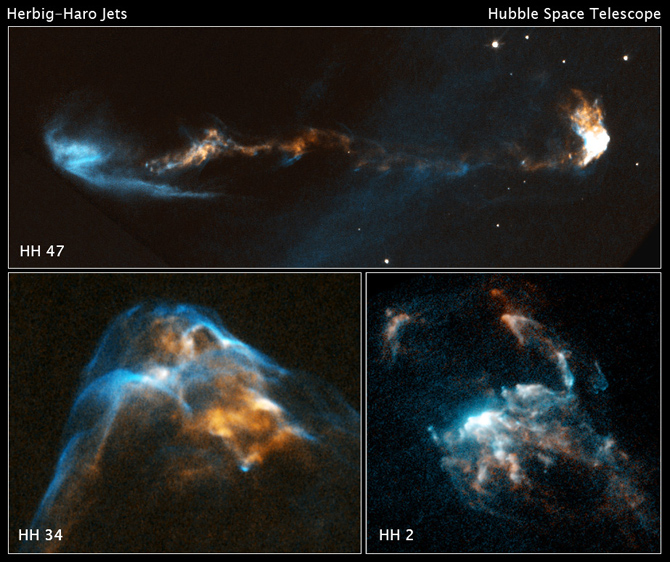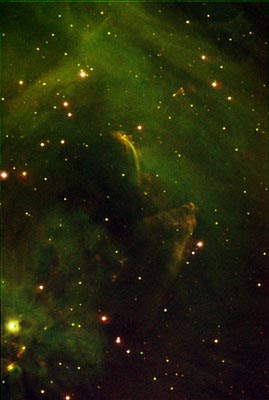Herbig-Haro object

Herbig-Haro 47.

Herbig-Haro 34.
Image courtesy Richard
Crisp.
A Herbig-Haro object is a small bright nebula in a star-forming region, created when fast-moving
(about 150 kilometers per second) jets of material from an infant star collide with the interstellar
medium. As the bipolar flow from
a young star plows into the surrounding gas, it generates strong shock
waves that heat and ionize the gas. In the cooling gas behind the shock
front, electrons and ions recombine to give an emission
line spectrum characteristic of Herbig-Haro objects. They are named
after the American astronomer George Herbig (1920–2013) and Guillermo Haro who discovered the first three such objects
in 1946–1947 in images of the nebula NGC 1999 in Orion. All known Herbig-Haro
objects have been found within the boundaries of dark clouds and are strong
sources of infrared.
Astronomers are still not clear what role jets play in the star-formation process or exactly how the star unleashes them. The jets appear to work in concert with magnetic fields. This helps bleed excess angular momentum from infalling material that is swirling rapidly. Once the material slows down it feeds the growing protostar, allowing it to fully condense into a mature star.


